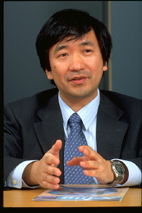Introduction

We did not know suitable mechanisms or functions in microsystems when we obtained the fabrication technology to build Micro Electro Mechanical Systems (MEMS) for the first time. Consequently, the conventional mechanisms were sometimes scaled down to the micro world with optimistic consideration. However, requirement of MEMS is difficult to be achieved because dominant physical laws in the micro-scale differ from the ones in the world where we are. Even if the dominant forces in the micro-scale could be evaluated in formula, the design suitable to the size was still ambiguous, sometimes. Although we know Newtonian mechanics and we can calculate the forces by simulation, the design of an aircraft is still under investigation.
The relationship between structures and functions regarding scale has been studied well from the biological point of view. Insects have obtained the fascinating structures and functions that are good models for microsystems.
The volume of insects and MEMS is so small that everything cannot be put into the bodies. Insects, however, have obtained indispensable functions out of many options to survive. The obtained functions seem to match the size of insects.
A microsystem that is an exact copy of tiny living organisms does not always work well because essential mechanisms may not be considered for its design. We have to understand the mechanisms well to avoid this mistake.
For typical MEMS products, elements are distributed either on a thin plate or in a thin rod, for example, display panels and catheters. A tiny 3D system like an insect may be hardly used because it requires a special environment to operate it. Furthermore, we sometimes miss it. Meaning that MEMS inspired by an insect are not tiny 3D systems, but they consist of elements with insect's functions ...............
(From an invited paper of The 11th International Conference on Solid-State Sensors and Actuators 2001)